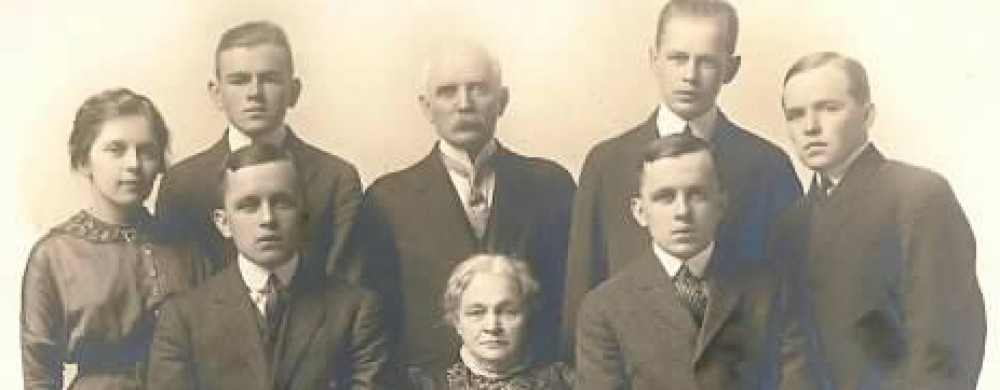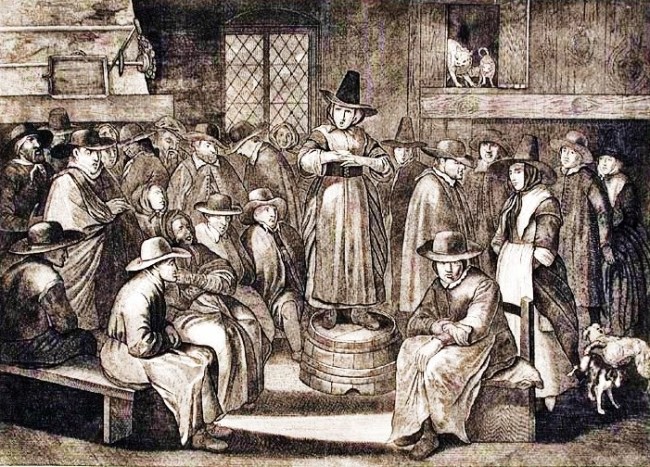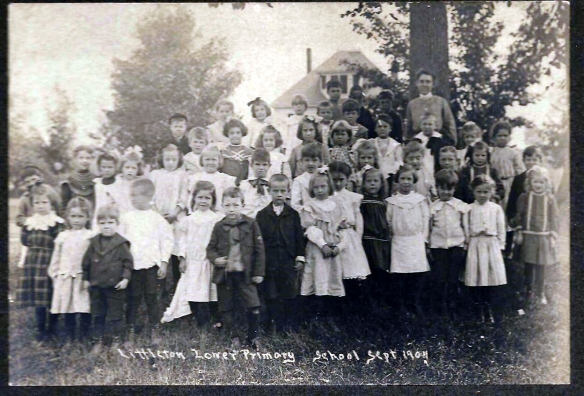Good people who lived good lives are bad subjects for a family historian trying to create vivid profiles that snap, crackle and pop with individuality. Most of our families come from hardworking, warmhearted and respectable people who kept their names out of the newspapers. So our good folks are boring, unless, maybe, they were good and rich. I’m among those fortunate to have long-ago cousins who did some bad, bad things.
Homicide By a Woman—A woman named Adaline Clark, residing in Freetown, Mass. has been arrested for killing David S. Hathaway, on the night of the 22nd inst., in that town. The Taunton Gazette says the parties resided together, and had a drunken quarrel. Hathaway was armed with an axe, and it appears that the woman, under apprehension of an attack from him with such a weapon, discharged a pistol, shooting him through the head and, killing him instantly…
This was news from Southeastern Massachusetts to Boston, to New York City where the Tribune ran the story above on September 30, 1856. From that single paragraph, unravels a convoluted and frankly sordid story. For starters, the murdered man, David Simmons Hathaway, and the murdering woman, Adaline (Hathaway) Clark, were cousins, the grandchildren of Dudley and Margaret (Briggs) Hathaway. Both families had deep roots in Freetown, Massachusetts.
The Murdered
Twenty six years before his awful end, 18-year-old David Simmons Hathaway, Jr. was so deeply in love with Olive Barrows, that he marched himself into the town hall to register his intention to marry her. When you look at the Freetown records for 1830, below the marriage intention, you can see the town clerk added,
“Forbidden by David S. Hathaway, father.”
If David senior objected to the union for a reason other than his son’s youth, it’s been lost to time. But I’ll bet David and Olive surprised the community by waiting three, long years. When David reached his majority (21) in 1833, no one could keep him from making Olive his own. The year after, a daughter, Sarah Briggs Hathaway, was born. She was to be the couple’s only child.
After the 1840 US census, Olive Hathaway disappears from record. David Hathaway became a man adrift who relied on alcohol to forget his sorrows and assuage his pain. If he was addicted to drink, it’s not hard to understand how David’s character may have taken a dark turn. He may not have been a very good father.
In 1848, at 14 1/2 years, Sarah married John Peirce, a man 8 years older than herself. Two years later for the 1850 US census, Sarah and John were living with a Barrows family (probably relatives of her mother). I haven’t yet discovered where David was staying and what he was doing that year. His name resurfaces for the 1855 census in Freetown, and there he spent his last 14 months on Earth.
The Murderer
In March 1834, David’s cousin and neighbor, Adeline Hathaway, married another neighbor, Seth Clark. Over the next 12 years, the Clarks produced four sons. The 1850 census shows Seth working as an unskilled laborer, and the family did not own their home. It must have been a struggle to feed and clothe their growing boys. Still, when the census enumerator stopped by in September, the Clarks appear to be an average family:
Seth Clark – Age 38 – Laborer
Adeline Clark – Age 36
Albert Clark – Age 15 – Attended school
Bradford Clark – Age 12 – Attended school
Rhodolphus Clark – Age 10
Phillip H -Clark – Age 4.
Not quite five years later, when the Massachusetts state census was taken July 17, 1855, the Clark household had changed significantly:
Seth Clark – Age 43 – Stone cutter
Adeline Clark – Age 40
Bradford Clark – Age 17 – Laborer
Phillip H -Clark – Age 9
David S. Hathaway – Age 43 – Farmer.
Seth has advanced from a laborer to a stone cutter, a skilled trade, which means he’s at last making a better wage. Two sons, Albert (20) and Rhodolphus (15), are missing from the home, and Bradford (17) is out of school and at work himself.
The final name in the household is David S. Hathaway. Perhaps, Adaline convinced Seth that her troubled cousin really needed a place to stay. There is no way for us today to know exactly when David came to live with the Clarks. We do know that they weren’t all living in harmony. The following bit among short items from Freetown, MA, appeared in March 1856:
David S. Hathaway was knocked down by Mrs. Seth Clark with a billet of wood for licking her son.
Adaline had a grievance, and few parents wouldn’t seek to punish an adult who assaulted their child. However, to pick up a piece of lumber and beat a perpetrator to the ground, suggests a helluva temper. For the incident to make the papers as far away as Macon, Georgia, Adaline must have given David a spectacular thrashing.
The Murder
The opening newspaper quote makes the incident seem a clear case of self-defense: David Hathaway came home drunk out of his mind, and an argument ensued that escalated into an axe attack. Adeline Clark saved herself from a grisly fate by making a single, perfect, kill shot. Self-defense was what Adaline told her neighbors that night. Self-defense was what she told the authorities.
On examination, Adaline explained she’d gone to bed and was roused sometime later by the noise made by the falling-down-drunk David Hathaway who was attempting to get inside the locked back door. Adeline took an oil lamp to guide her way to the kitchen and let David inside. He took the lamp from her and shoved her outside into the rain. While she pounded and pleaded to be let back in, David guarded the door, axe in hand, and vowed he’d use it if Adaline reentered the house.
After an hour and a half outside in her rain-soaked clothes, Adaline said she heard a chair tip over, then a thud which she assumed was David having fallen down. At this point, Adaline went into the house and retrieved the pistol she had bought a week or so before and kept ready. By the lamp light in the front room, she saw David on the floor with the axe beside him. She claimed he reiterated his threat to kill her and “two or more of her children.” However, David was too incapacitated to stand up. That was the moment Adaline chose to fire a bullet into his brain.
Somewhere, in the interest of full disclosure, she added that she had been David Hathaway’s mistress.
Having given testimony that she believed completely justified her act, Adaline must have been knocked for a loop when the coroner’s jury rendered its verdict of willful and malicious murder.
The Trial
Adaline failed to realize that her own account of the shooting and the advance planning that went into it, were cold and calculating moves. Why didn’t she go to her neighbor’s house when David locked her out in the rain, before she killed him, instead of afterward as she did? In spite of the wilful and malicious murder finding, Adaline was tried at Taunton for the lesser crime of manslaughter.
It was a tough trial and jury deliberations did not go smoothly. Adaline was convicted in May 1858, but not sentenced right away. In hope of being granted leniency, Adaline appealed to the court of public opinion by publishing a “lengthy statement in the Fall River News detailing the nature of the troubles between herself and Hathaway…”
In October 1858, Adaline Hathaway Clark was sentenced to five years at hard labor in the New Bedford House of Correction. At 45 years of age, Adeline was enumerated there among the other inmates for the 1860 US census. Having paid her debt to society, she was released in June 1863.
The Surprise Ending
Several newspaper stories about Adaline including the line, She has a husband living in Rhode Island. That’s right, we can’t forget about Seth Clark, head of household, husband and father until his world imploded. When Seth left Freetown we can’t say exactly; why he left is an easy guess in light of Adaline’s publicly confessed adultery. It’s most likely that Adaline and Seth never laid eyes on each other again after 1856.
In the 1865 state census, ex-con, Adaline Clark lived again in Freetown with her 26-year-old son, Bradford. She claimed that year she was a widow, but she wasn’t. In 1880 Adeline said she was divorced, but that was not true either. During that same enumeration, Seth Clark, alive and well in Providence, RI, said he was a widower. And so the estranged spouses alternated between wishing their legal bonds dissolved, and wishing the other dead – for the rest of their long lives. Seth died in 1892 at nearly 82 years, and Adaline went in 1896 at 82 and some months more.
It’s touching irony that Seth and Adaline Clark were laid to rest forever together in Assonet Burying Ground.


We who know the worst about them should resist the urge to smirk, and consider this. The Clark children suffered instability, a broken home, and social stigma that must have hurt them in countless ways, – and yet they understood that in the end, love is all that matters.
The surviving Clark children forgave and honored their parents so that Clark descendants strolling the peaceful yard today might think of Seth and Adaline as just another boring, long-married couple.
Sources:
Macon Weekly Telegraph (Macon, GA); Volume: XXX Issue: 32; Tuesday, March 4, 1856; Page 3. Homicide by a Woman
The Boston Herald (Boston, MA); Saturday, September 27, 1856; Page 2. The Tragedy at Freetown
The New York Tribune (New York, NY); Volume: XVI Issue: 4820; Tuesday, September 30, 1856; Page 3. Homicide by a Woman
The Boston Herald (Boston, MA); Volume: VI Issue: 127; Thursday, April 2, 1857; Page 4. Miss Adeline Clark
The Boston Traveler (Boston, MA); Saturday, May 8, 1858; Page 2. Murderers on their Defence
The Boston Herald (Boston, MA); Friday, August 14, 1863; Page 2. The Shooting Case…
National Archives (NARA); US Population Schedules.
Massachusetts. 1855–1865 Massachusetts State Census [microform]. New England Historic Genealogical Society, Boston, Massachusetts.
Ancestry.com, Massachusetts Town and Vital Records database.
Find A Grave <www.findagrave.com> photos courtesy of jtb, 2012; Seth Clark Memorial#82168445; Adaline Clark Memorial #82168471








